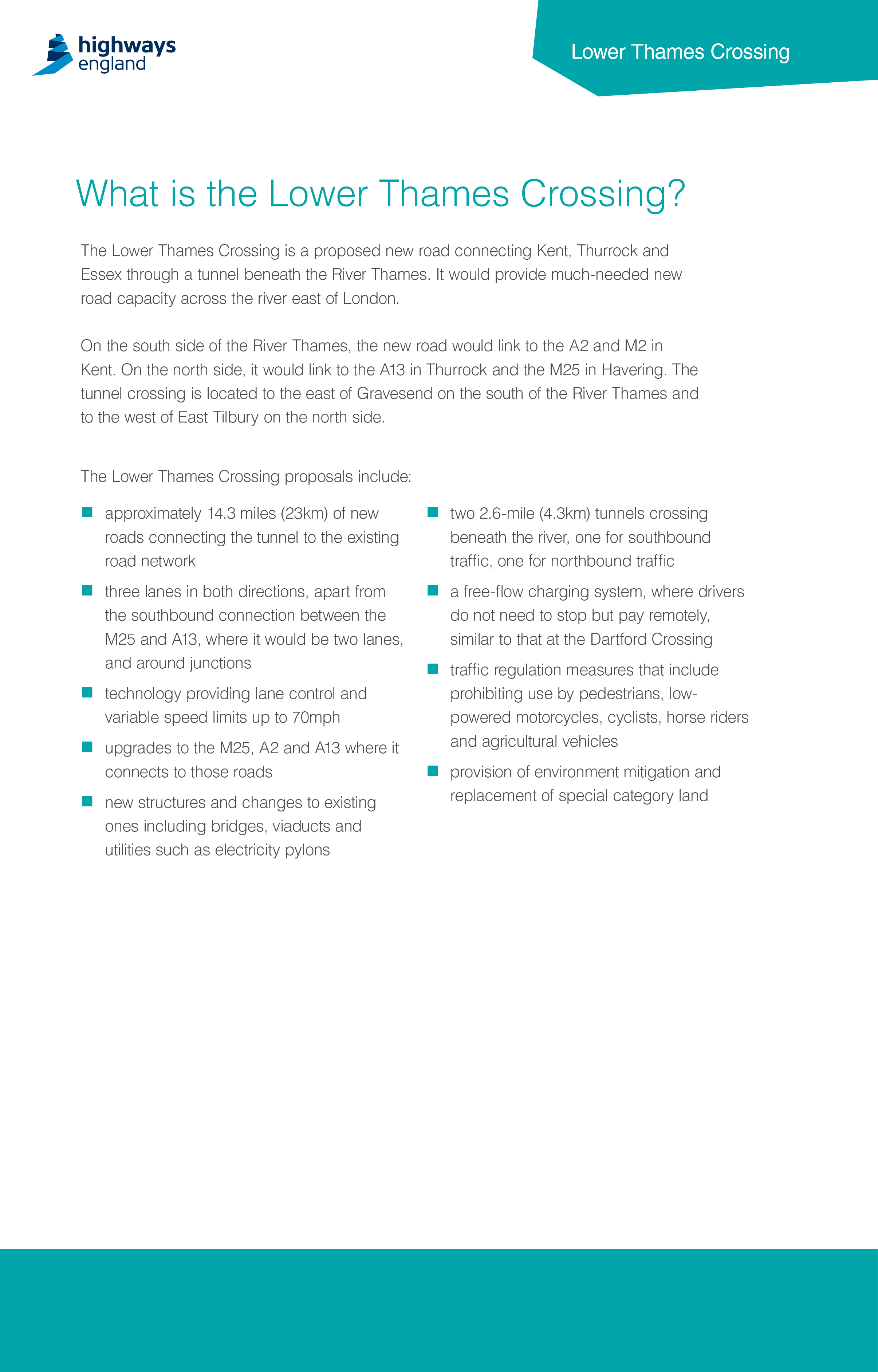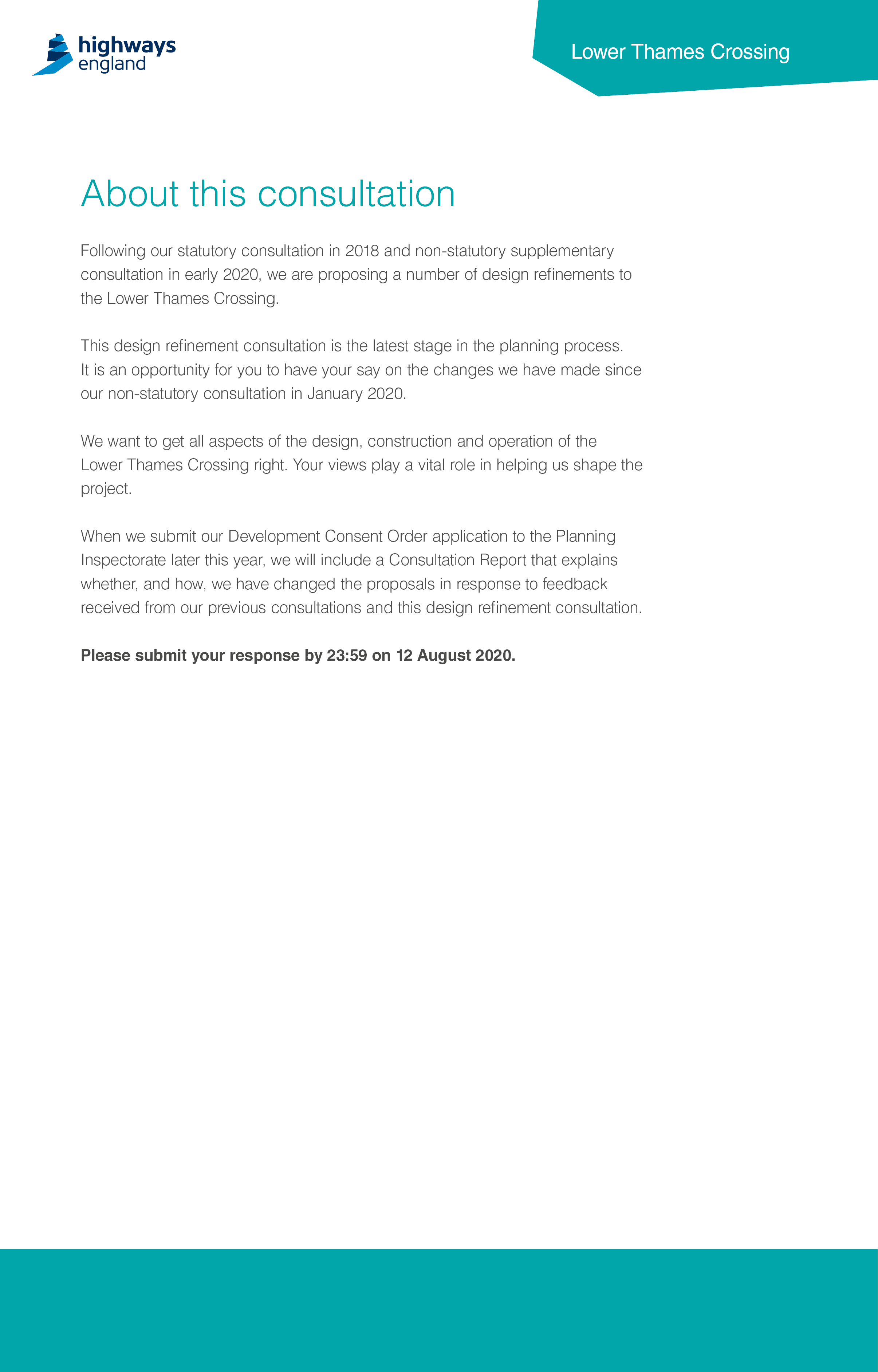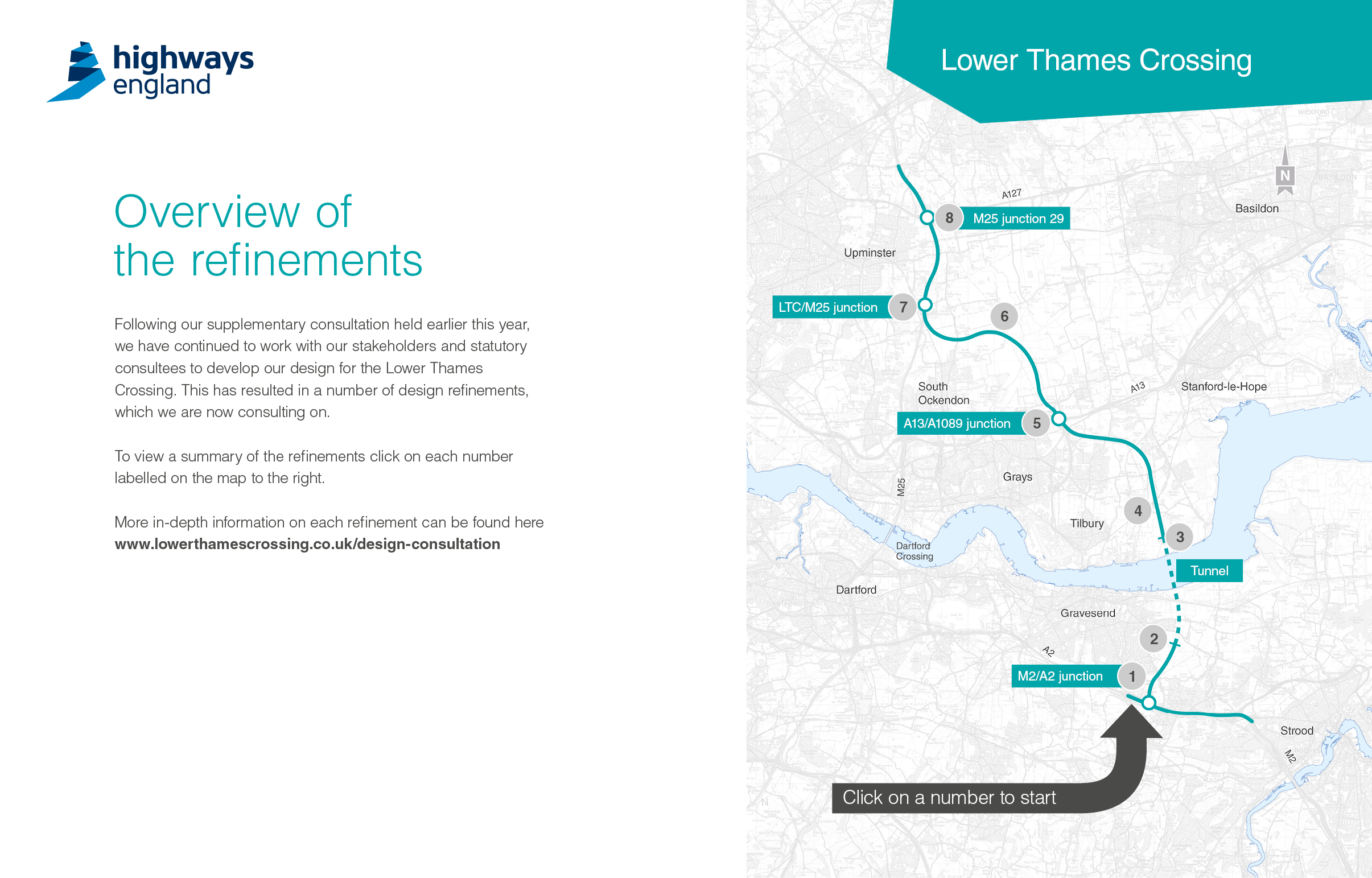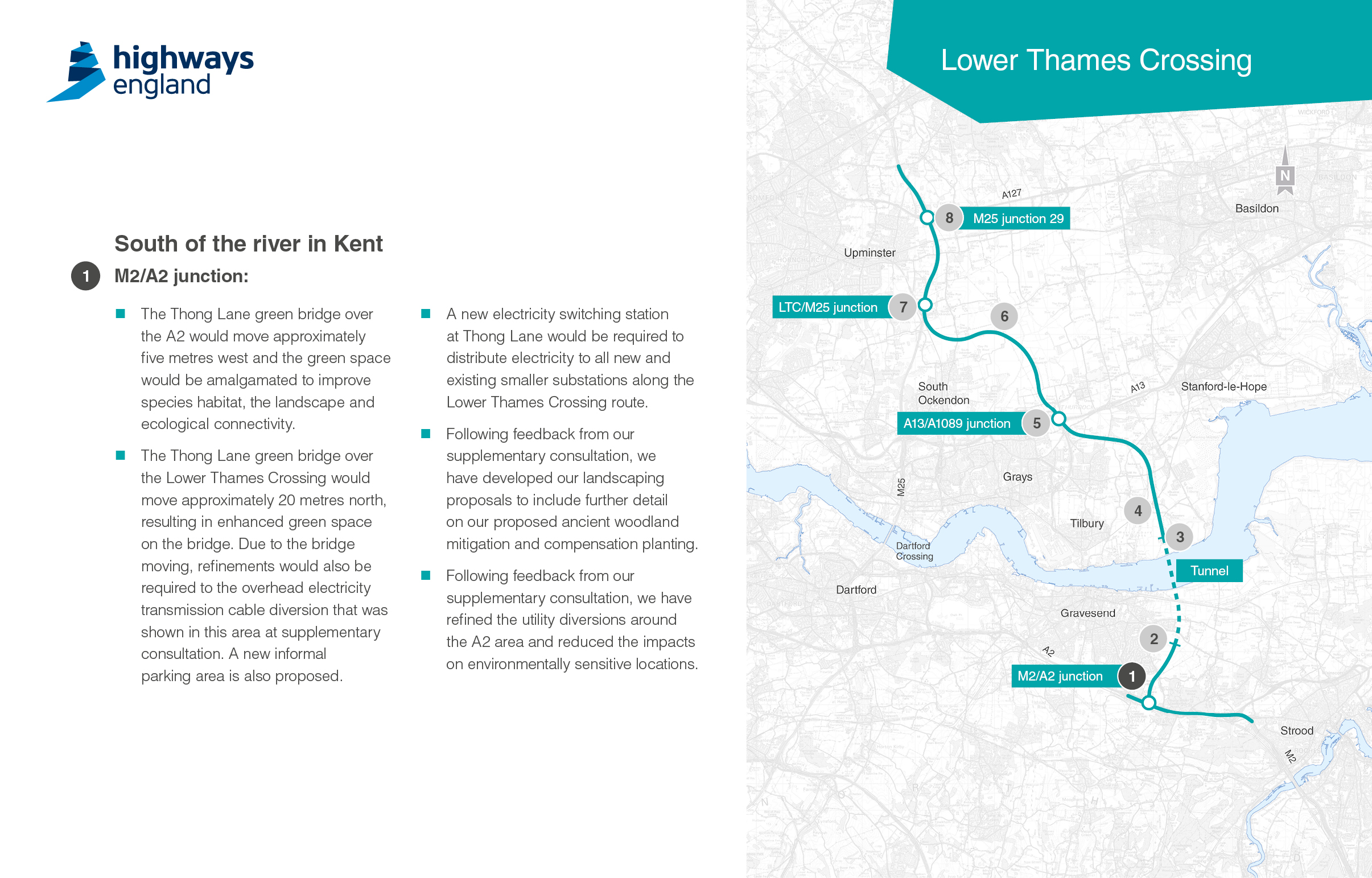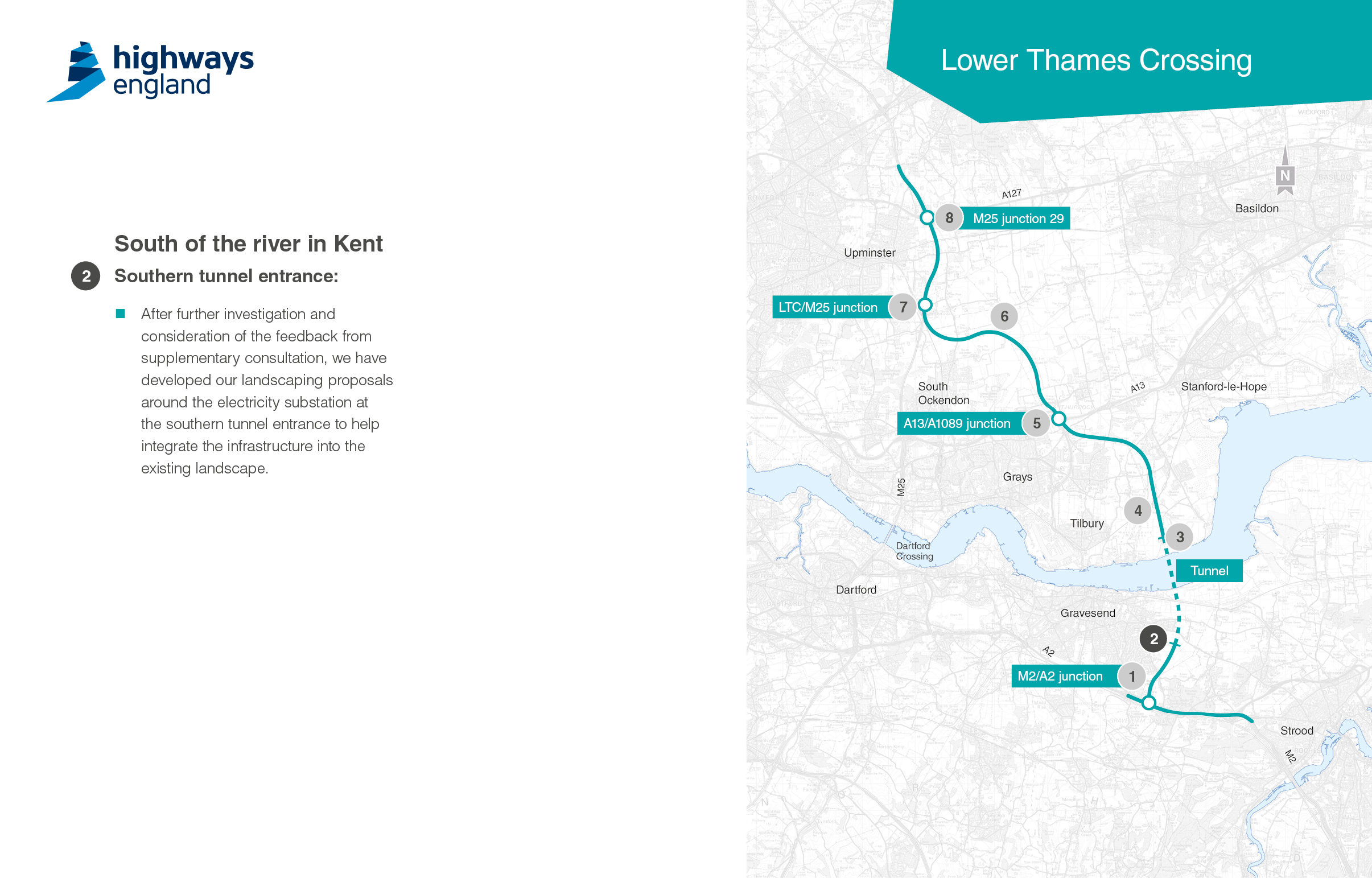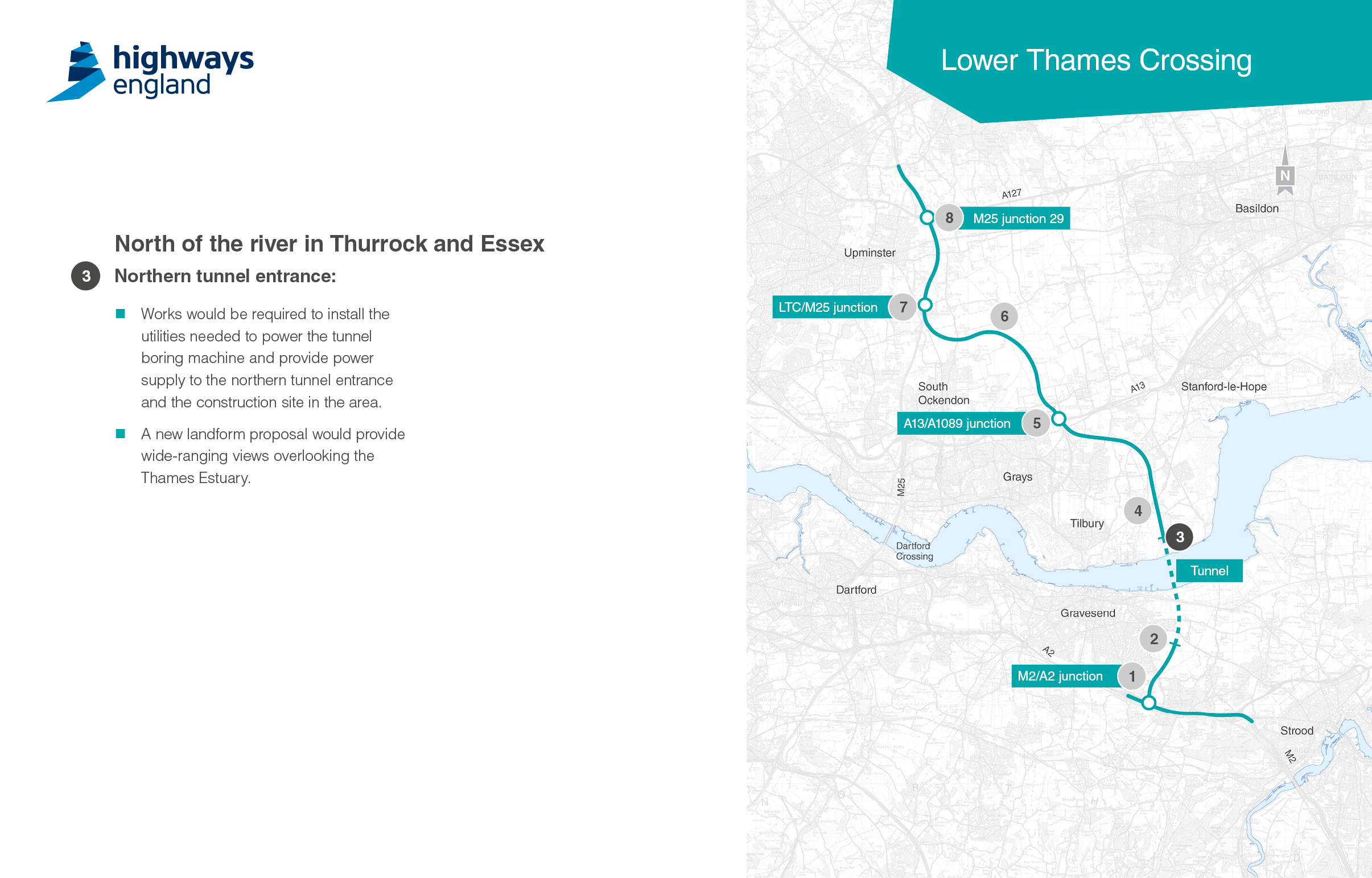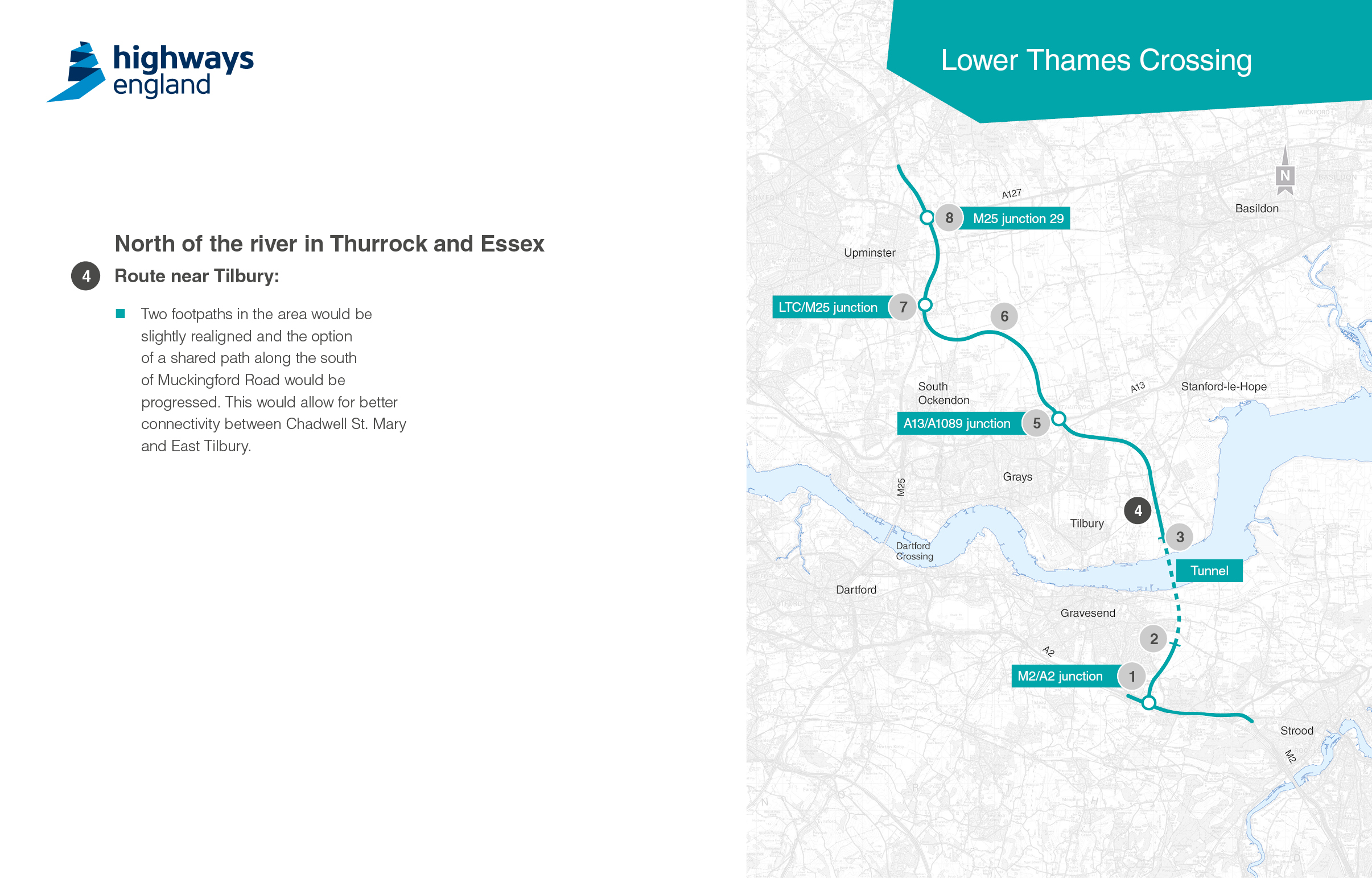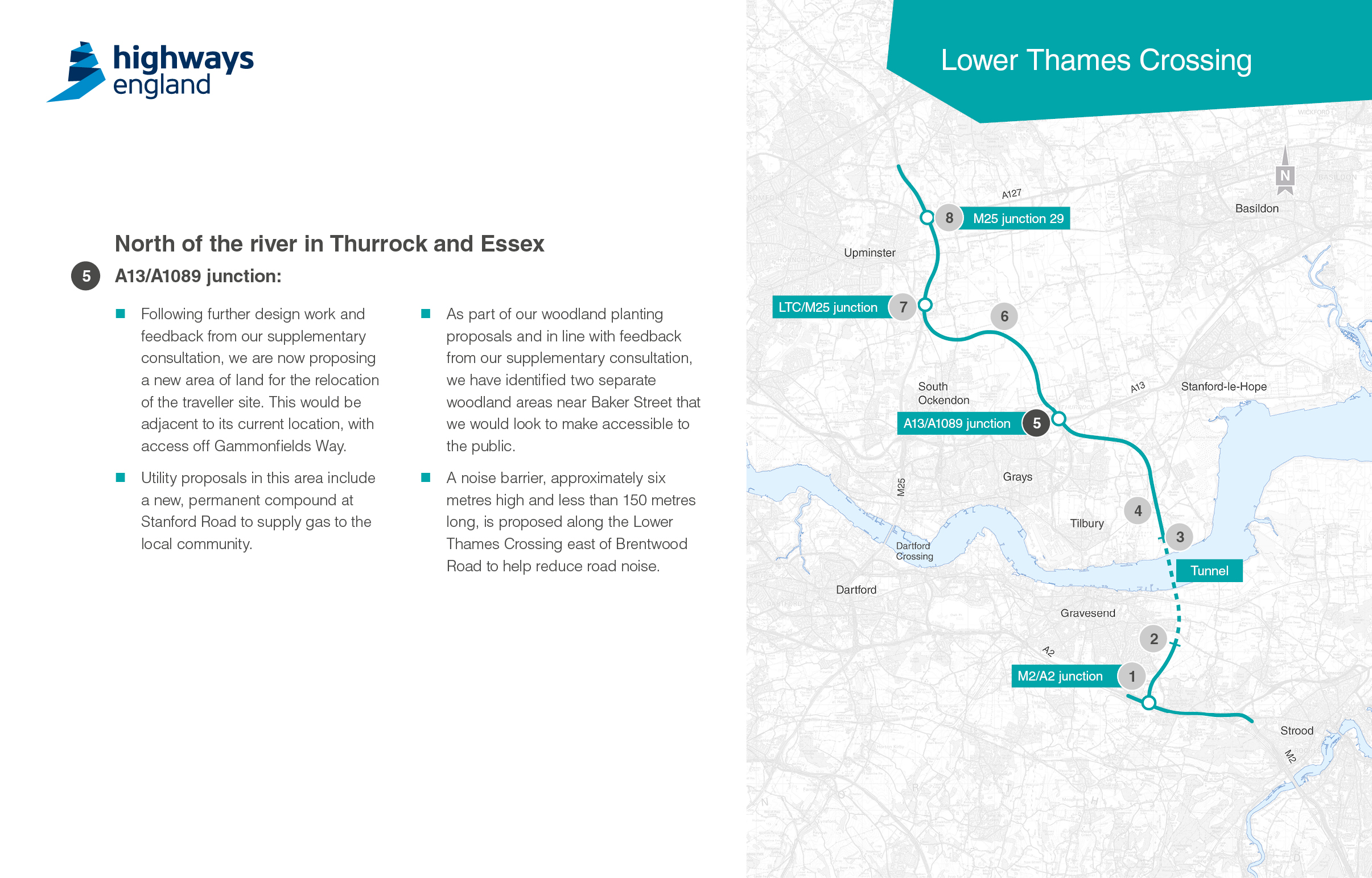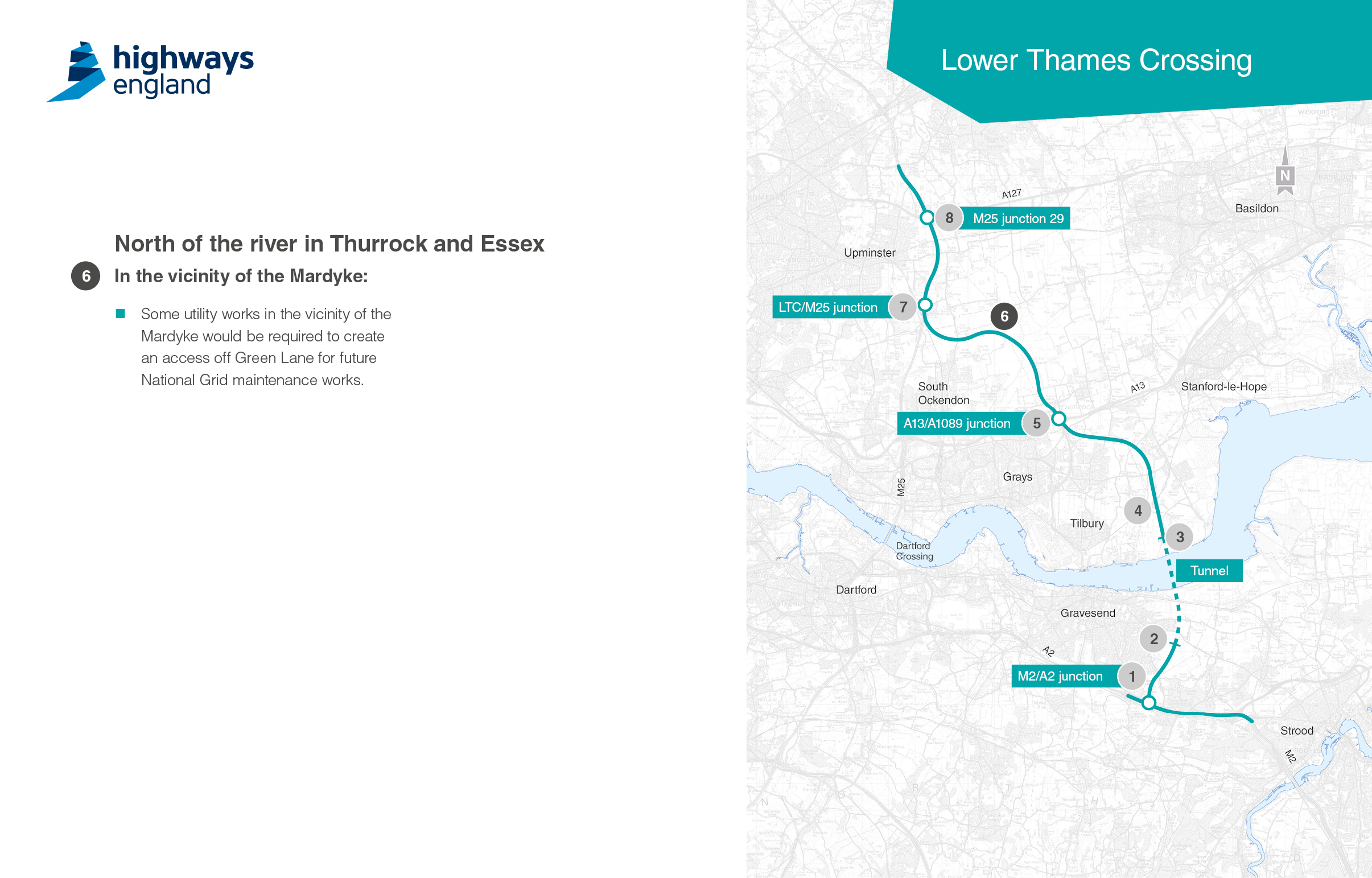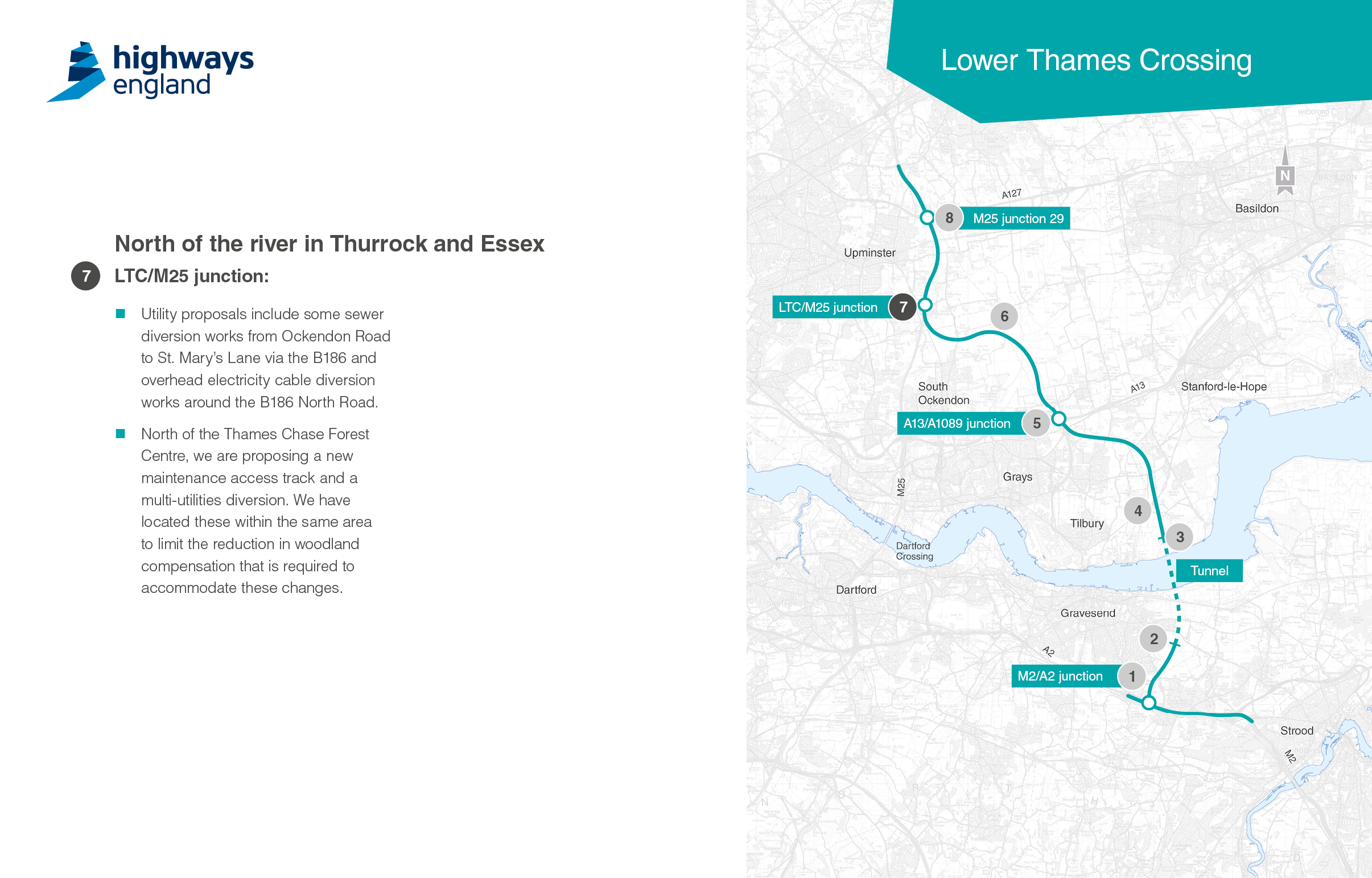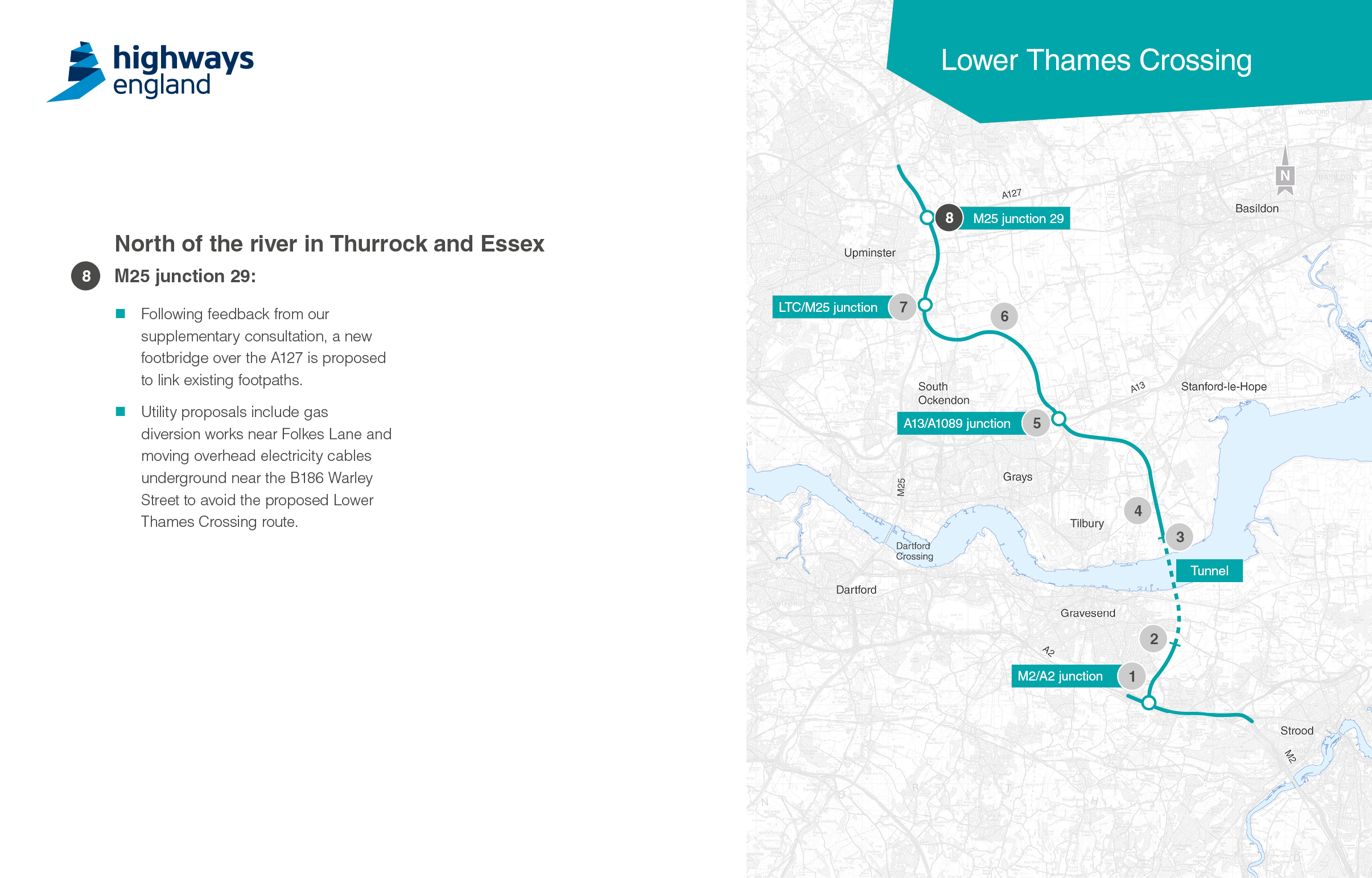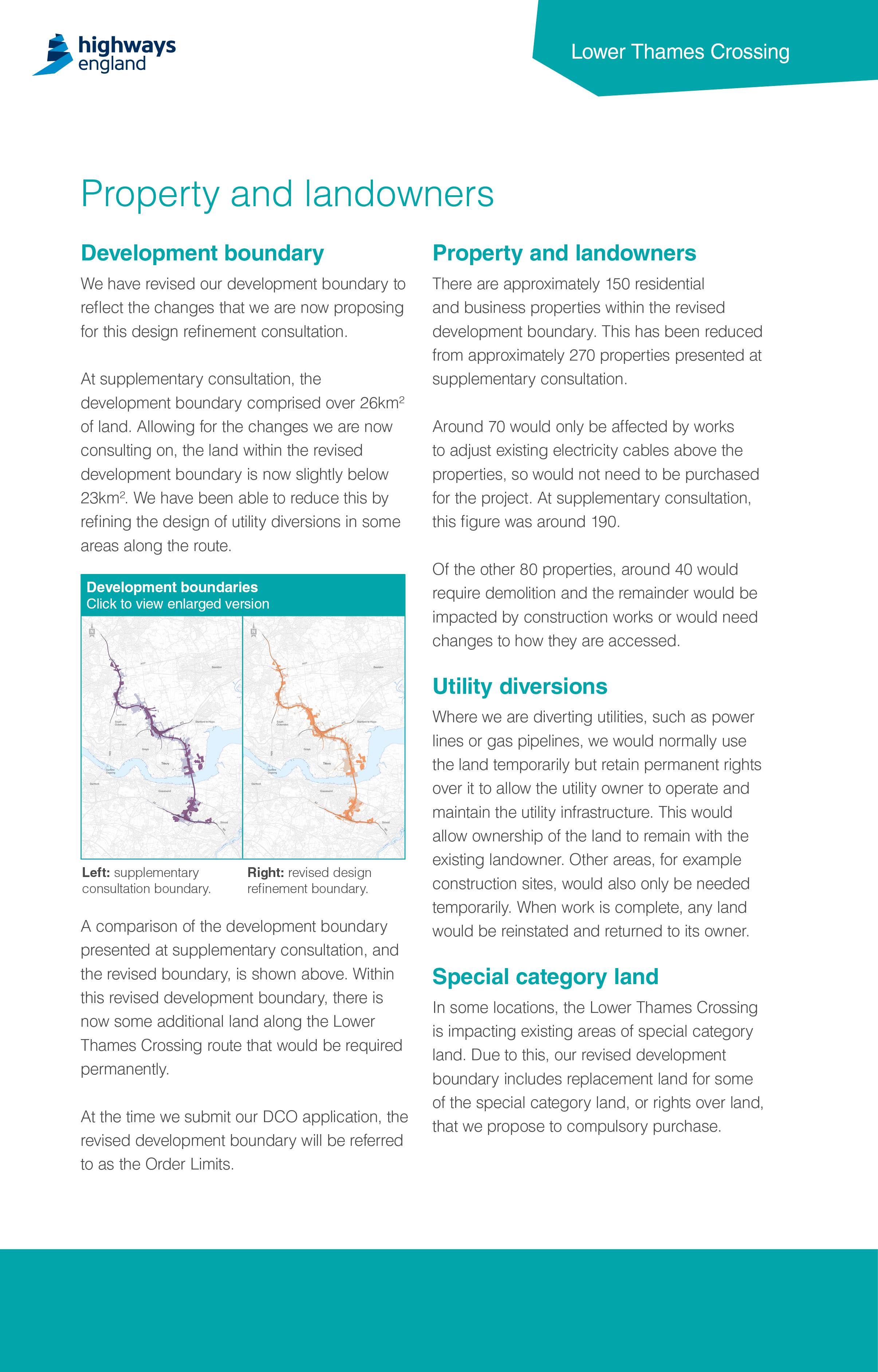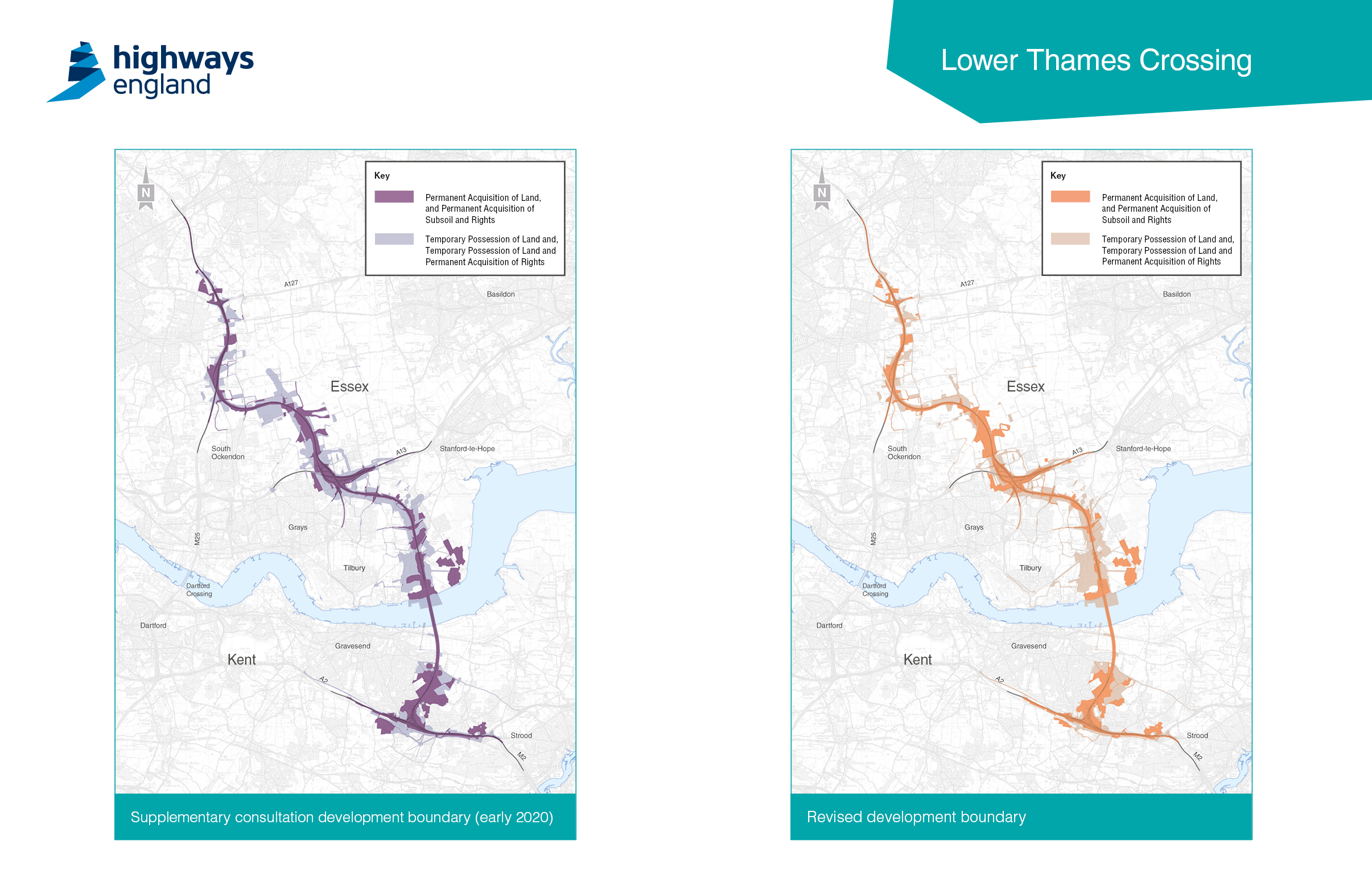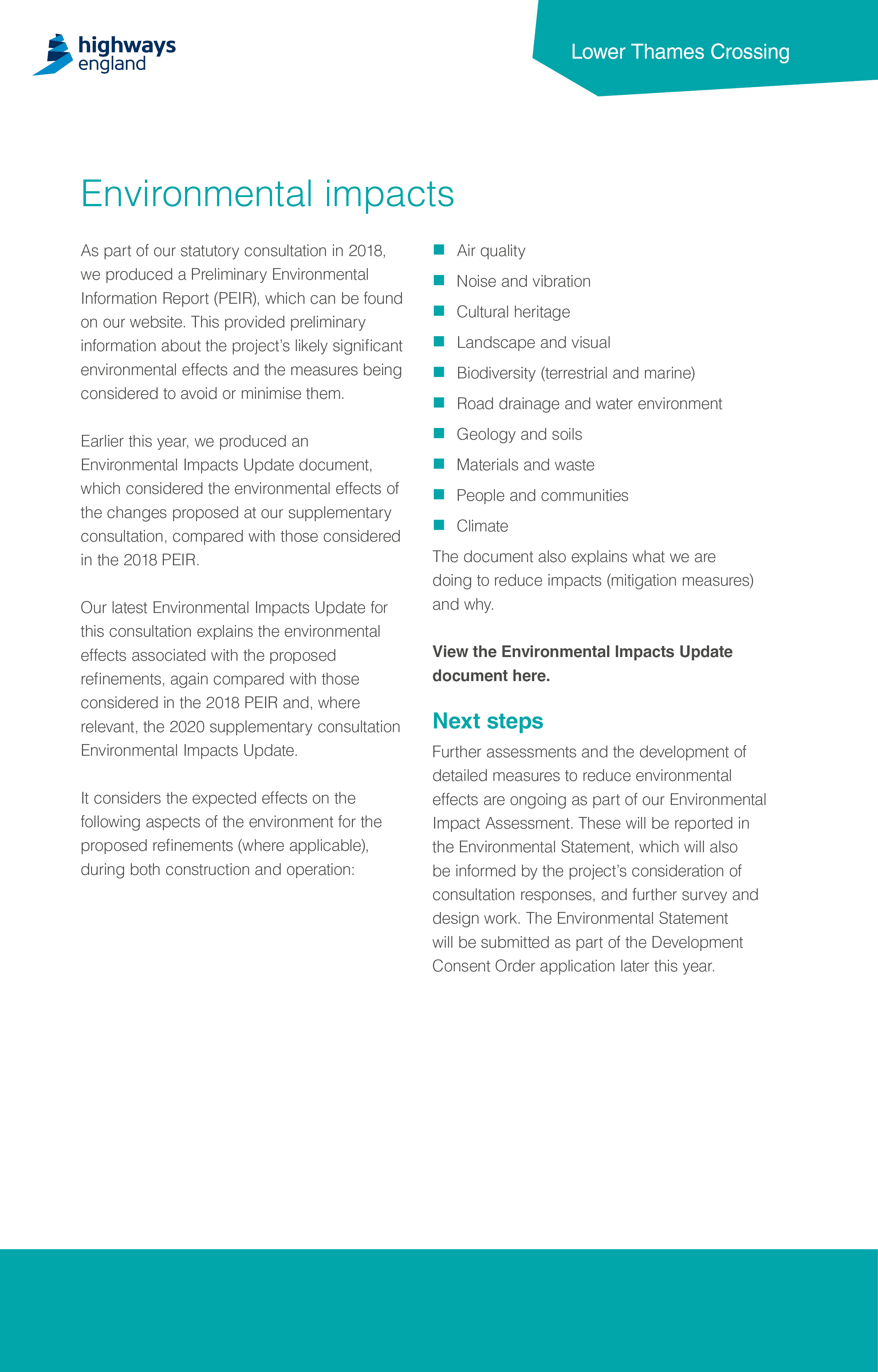This website is an archive of our design refinements consultation in 2020. For our current consultation, please visit ltcconsultation2022.nationalhighways.co.uk
Welcome
Welcome to the Lower Thames Crossing design refinement exhibition
This website is an archive of our design refinements consultation in 2020. For our current consultation, please visit ltcconsultation2022.nationalhighways.co.uk
The Lower Thames Crossing is a proposed new road connecting Kent, Thurrock and Essex through a tunnel beneath the River Thames. Following a statutory consultation in 2018 and a supplementary consultation earlier this year, we are proposing a number of refinements to the design of the project.
This online exhibition, containing information boards, consultation documents, videos and an interactive map of the entire route, allows you to see these refinements and lists a number of ways you can give us your feedback.
To navigate your way through the exhibition:
- Use your mouse or touch screen device to scroll left to right or use the left and right arrows on your keyboard.
- Click on the information icon to expand each panel or click the play symbol to watch a video. To close a panel, click the X button on the top right corner.
If you have any specific questions or concerns about the proposed refinements, you can also book a call back from a member of our team via our consultation telephone surgery. You can also sign up to one of our webinars to learn more about the refinements. Further information on how to book are highlighted in this exhibition.
Watch the short video below for instructions on how to navigate the exhibition.
About the project
What is the Lower Thames Crossing?
The Lower Thames Crossing is a proposed new road connecting Kent, Thurrock and Essex through a tunnel beneath the River Thames. It would provide much-needed new road capacity across the river east of London.
On the south side of the River Thames, the new road would link to the A2 and M2 in Kent. On the north side, it would link to the A13 in Thurrock and the M25 in Havering. The tunnel crossing is located to the east of Gravesend on the south of the River Thames and to the west of East Tilbury on the north side.
The Lower Thames Crossing proposals include:
- approximately 3 miles (23km) of new roads connecting the tunnel to the existing road network
- three lanes in both directions, apart from the southbound connection between the M25 and A13, where it would be two lanes, and around junctions
- technology providing lane control and variable speed limits up to 70mph
- upgrades to the M25, A2 and A13 where it connects to those roads
- new structures and changes to existing ones including bridges, viaducts and utilities such as electricity pylons
- two 6-mile (4.3km) tunnels crossing beneath the river, one for southbound traffic, one for northbound traffic
- a free-flow charging system, where drivers do not need to stop but pay remotely, similar to that at the Dartford Crossing
- traffic regulation measures that include prohibiting use by pedestrians, low- powered motorcycles, cyclists, horse riders and agricultural vehicles
- provision of environment mitigation and replacement of special category land
About the consultation
About this consultation
Following our statutory consultation in 2018 and non-statutory supplementary consultation in early 2020, we are proposing a number of design refinements to the Lower Thames Crossing.
This design refinement consultation is the latest stage in the planning process.
It is an opportunity for you to have your say on the changes we have made since our non-statutory consultation in January 2020.
We want to get all aspects of the design, construction and operation of the Lower Thames Crossing right. Your views play a vital role in helping us shape the project
When we submit our Development Consent Order application to the Planning Inspectorate later this year, we will include a Consultation Report that explains whether, and how, we have changed the proposals in response to feedback received from our previous consultations and this design refinement consultation.
Please submit your response by 23:59 on 12 August 2020.
Explore our interactive map
Overview of the refinements
Overview of the refinements
Following our supplementary consultation held earlier this year, we have continued to work with our stakeholders and statutory consultees to develop our design for the Lower Thames Crossing. This has resulted in a number of design refinements, which we are now consulting on.
To view a summary of the refinements click on each number labelled on the map to the right.
More in-depth information on each refinement can be found here
Property and landowners
Property and landowners
Development boundary
We have revised our development boundary to reflect the changes that we are now proposing for this design refinement consultation.
At supplementary consultation, the development boundary comprised over 26km² of land. Allowing for the changes we are now consulting on, the land within the revised development boundary is now slightly below 23km². We have been able to reduce this by refining the design of utility diversions in some areas along the route.
A comparison of the development boundary presented at supplementary consultation, and the revised boundary, is shown above. Within this revised development boundary, there is now some additional land along the Lower Thames Crossing route that would be required permanently.
At the time we submit our DCO application, the revised development boundary will be referred to as the Order Limits.
Property and landowners
There are approximately 150 residential and business properties within the revised
development boundary. This has been reduced from approximately 270 properties presented at supplementary consultation.
Around 70 would only be affected by works to adjust existing electricity cables above the properties, so would not need to be purchased for the project. At supplementary consultation, this figure was around 190.
Of the other 80 properties, around 40 would require demolition and the remainder would be impacted by construction works or would need changes to how they are accessed.
Utility diversions
Where we are diverting utilities, such as power lines or gas pipelines, we would normally use the land temporarily but retain permanent rights over it to allow the utility owner to operate and maintain the utility infrastructure. This would allow ownership of the land to remain with the existing landowner. Other areas, for example construction sites, would also only be needed temporarily. When work is complete, any land would be reinstated and returned to its owner.
Special category land
In some locations, the Lower Thames Crossing is impacting existing areas of special category land. Due to this, our revised development boundary includes replacement land for some of the special category land, or rights over land, that we propose to compulsory purchase.
Environmental impacts
Environmental impacts
As part of our statutory consultation in 2018, we produced a Preliminary Environmental Information Report (PEIR), which can be found on our website. This provided preliminary information about the project’s likely significant environmental effects and the measures being considered to avoid or minimise them.
Earlier this year, we produced an Environmental Impacts Update document, which considered the environmental effects of the changes proposed at our supplementary consultation, compared with those considered in the 2018 PEIR.
Our latest Environmental Impacts Update for this consultation explains the environmental effects associated with the proposed refinements, again compared with those considered in the 2018 PEIR and, where relevant, the 2020 supplementary consultation Environmental Impacts Update.
It considers the expected effects on the following aspects of the environment for the proposed refinements (where applicable), during both construction and operation:
- Air quality
- Noise and vibration
- Cultural heritage
- Landscape and visual
- Biodiversity (terrestrial and marine)
- Road drainage and water environment
- Geology and soils
- Materials and waste
- People and communities
- Climate
The document also explains what we are doing to reduce impacts (mitigation measures) and why.
View the Environmental Impacts Update document here.
Next steps
Further assessments and the development of detailed measures to reduce environmental effects are ongoing as part of our Environmental Impact Assessment. These will be reported in the Environmental Statement, which will also
be informed by the project’s consideration of consultation responses, and further survey and design work. The Environmental Statement
will be submitted as part of the Development Consent Order application later this year.
Consultation materials
Consultation materials
Here you’ll find our consultation materials. Please browse or download.
Have your say
 Have your say
Have your say
Email: info@lowerthamescrossing.co.uk
General enquiries: 0300 123 5000
Find out more
Find out more
Email: info@lowerthamescrossing.co.uk
General enquiries: 0300 123 5000
Online
You can visit the design refinement consultation website at:
www.lowerthamescrossing.co.uk/design-consultation
Webinar
Between 20 and 30 July we held a series of webinars, where members of the project team explained and answered questions about the proposed refinements to the design of the Lower Thames Crossing. Whilst the webinar series has ended, you can watch recordings of each webinar using the links below.
South of the River:
- 20 July, starting 7pm (you can view the recording of this session here)
- 30 July, starting 7pm (you can view the recording of this session here)
North of the River:
- 21 July, starting 7pm (you can view the recording of this session here)
- 29 July, starting 7pm (you can view the recording of this session here)
Welcome to the Lower Thames Crossing design refinement exhibition
Welcome to the Lower Thames Crossing design refinement exhibition
Refinements in Kent
Refinements in Kent
Refinements in Thurrock and Essex
Refinements in Thurrock and Essex
Before and after images
Before and After


